► Revisiting the VW XL1 eco hero
► Watch our new video review
► Hard to believe it’s 12 years old
The super-streamlined 313mpg Volkswagen XL1 could be unveiled this week and it’d possess more shock-and-awe than any other new metal you’ve seen of late. Which makes the fact that it was first revealed as a production car back in 2013 all the more remarkable.
We’ve dusted down this immaculate, 4000-miler from Volkswagen UK’s heritage fleet to take for a trip down memory lane. Watch our new VW XL1 video review above and read on for a retrospective road test of this most pioneering of hybrid cars.
Only 200 were made and just 10 remain licensed in the UK. Yes, it’s something of a unicorn and we bet you can’t remember the last time you saw one on British roads…
At a glance
Pros: Beautifully built (especially considering the low volume), exquisite engineering, extreme light weight, handling balance, extraordinary economy – even in winter, it’ll turn heads absolutely everywhere
Cons: It was pricey at launch, and it ain’t cheap now; graunchy brakes, lack of rear window, it’ll turn heads absolutely everywhere
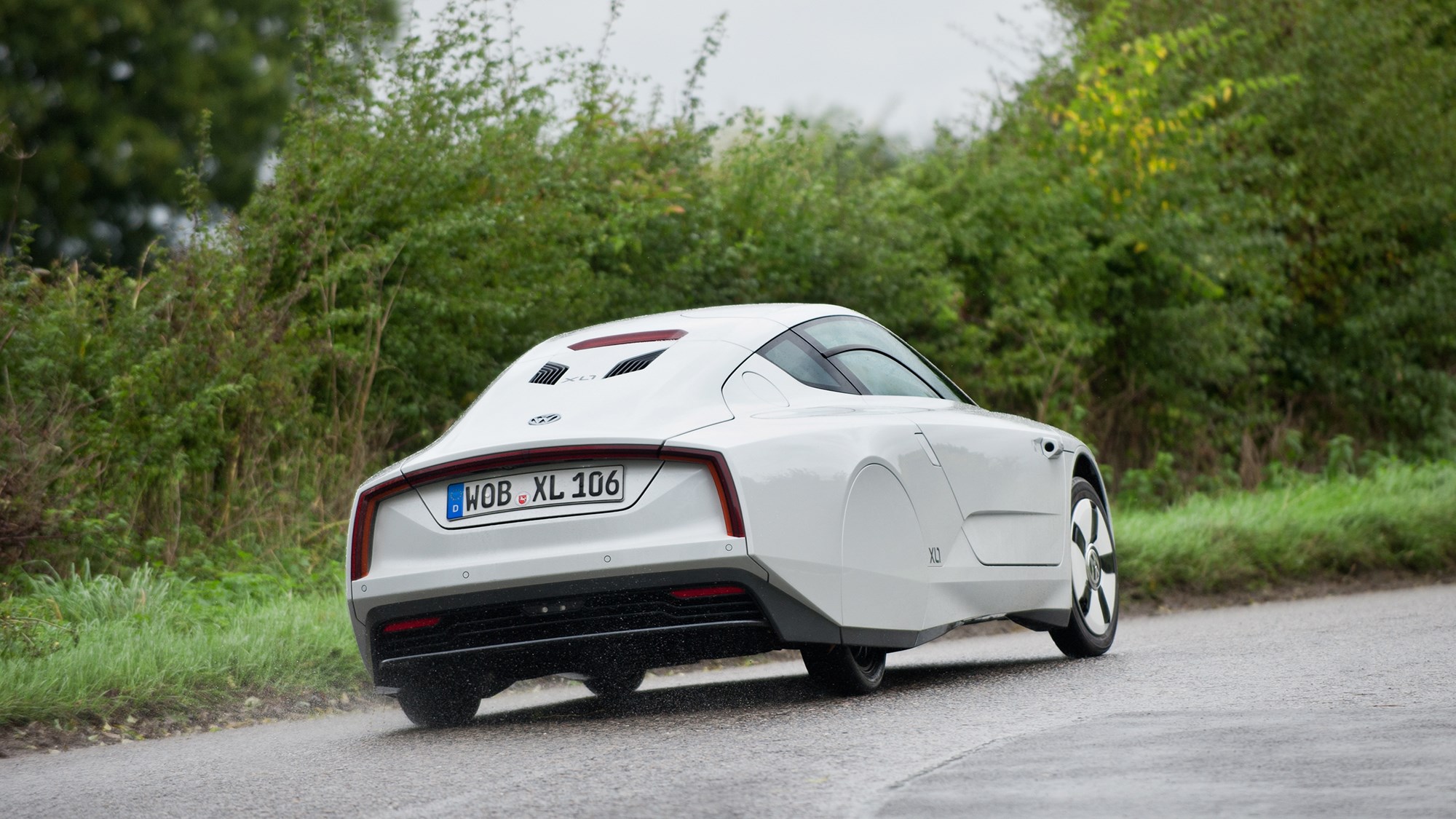
What’s new?
Nothing now, obviously – although the fresh thinking and exotic construction wouldn’t look out of place on a car launched in 2025. Production ran from 2013-2016 and only 200 were manufactured.
Rewind to the start of this millennium and Volkswagen’s ‘one-litre’ project was a revelation. Perhaps inevitably the brainchild of engineering scion Ferdinand Piech, it was his singleminded product focus that begat cars as extreme as the Bugatti Veyron at one end of the VW empire and the XL1 fuel miser at the other.
Back in 2002, Piech surprised the world when he drove Volkswagen’s original 1-litre concept car to the annual shareholders meeting, stating the ambition ‘to bring a production car to market that was practical for everyday use yet offered a low fuel consumption of one litre per 100km.’
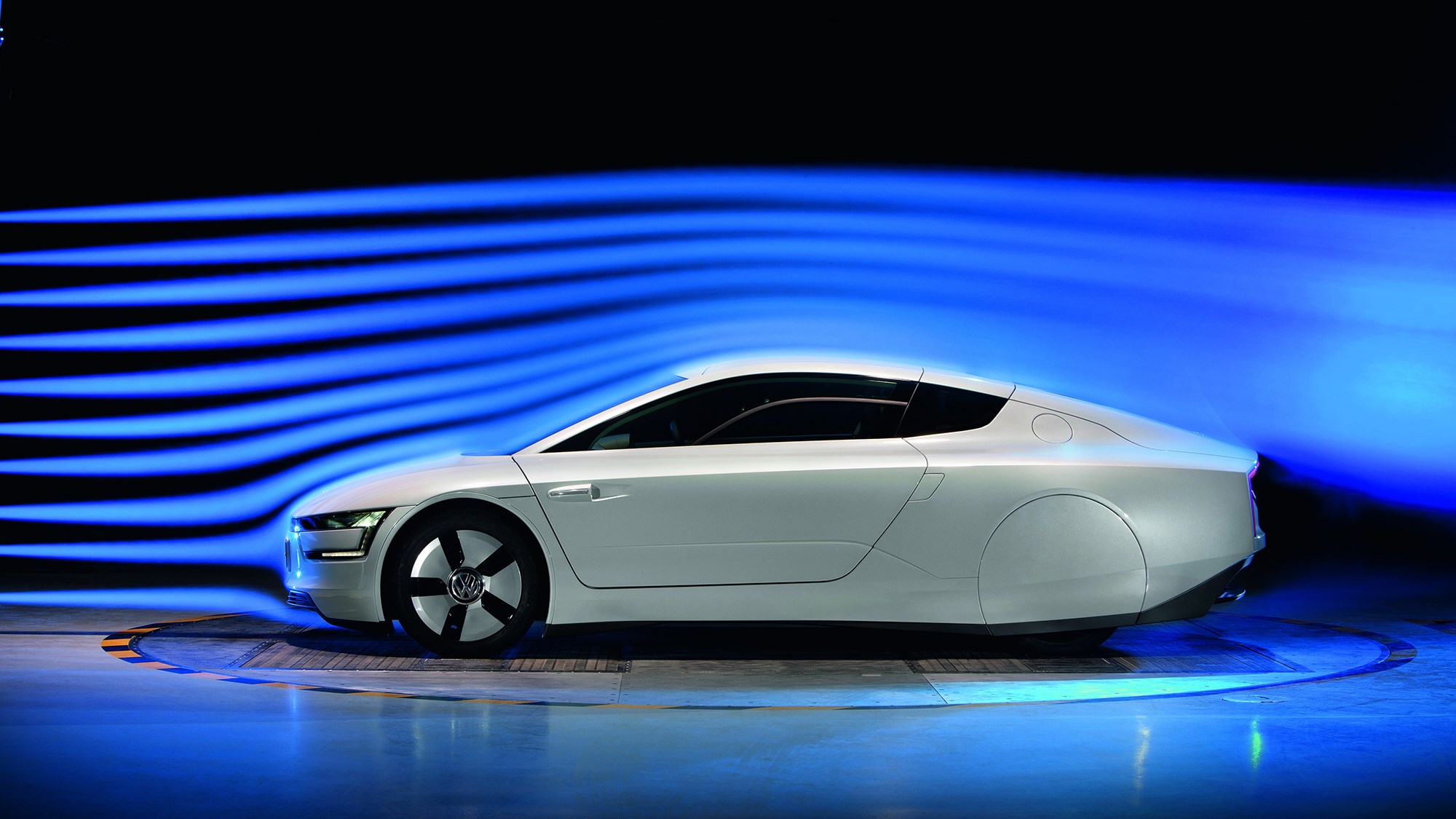
Yes, he challenged them to build a fully homologated road car capable of achieving 282 miles per gallon. This radical slice of futurama was the eventual result: a rolling testbed whose learnings percolated down to a whole generation of gradually more economical production cars.
What are the specs?
The Volkswagen XL1’s spec sheet reads more like the recipe for a supercar than a fuel miser. Built around a composite tub, the two-seater was designed to weigh as little as possible and to present the most aerodynamic face of any production car ever from its sleek, mostly carbonfibre-reinforced plastic bodywork.
It’s a tiny slip of a car: just 3888mm long, 1665mm wide and a low-slung 1153mm off the floor. And check out the extreme teardrop shape, with a narrowly tapered rear end, fared-in rear wheels and cameras for door mirrors years before Audi upset the world with its e-Tron lenses.
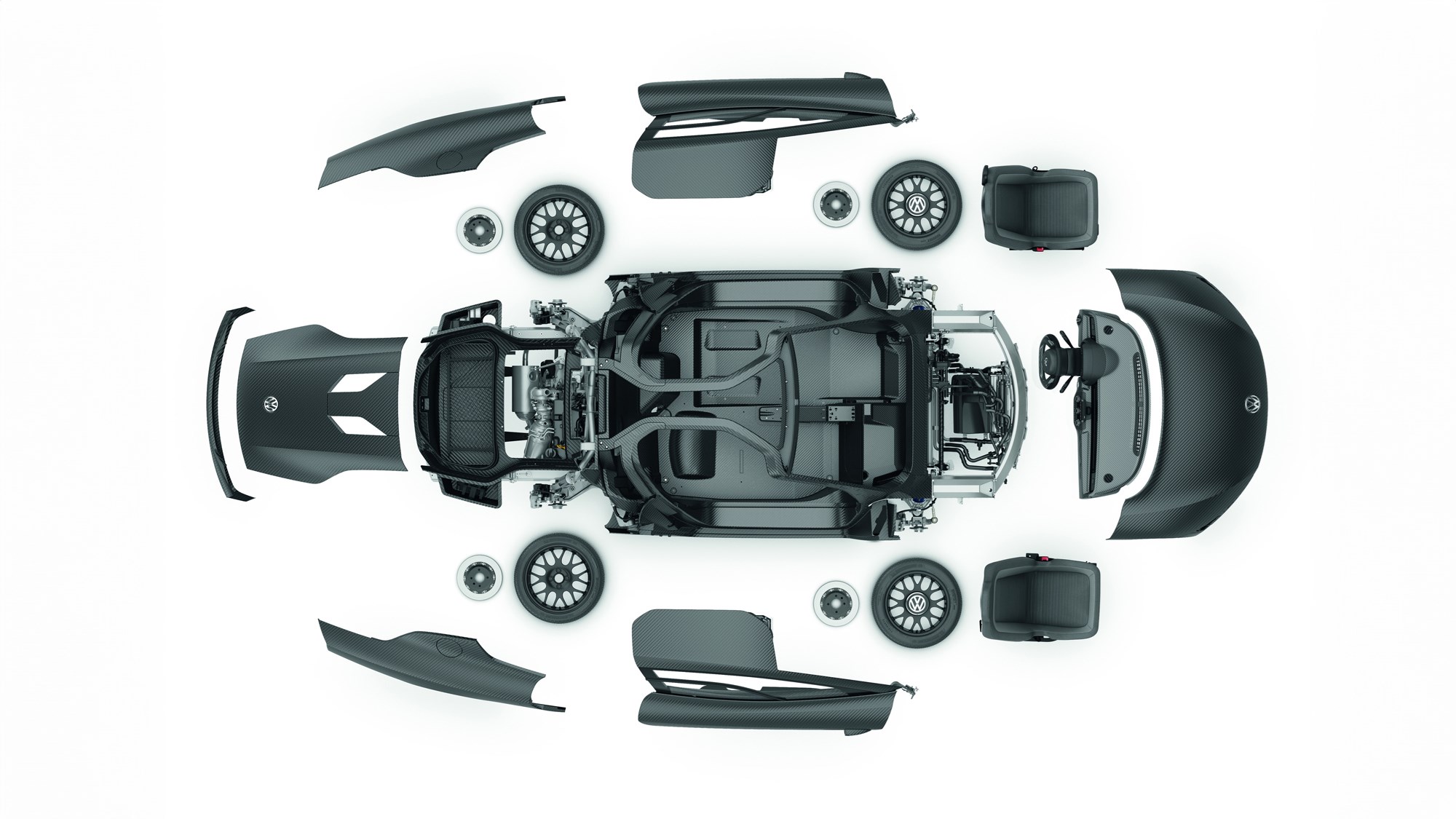
It worked a treat – the XL1 weighs a lithe 795kg without a driver onboard and the drag coefficient is an extraordinary 0.189, thanks in no small part to a remarkably low frontal area and inset cockpit-effect canopy. This car is designed to cleave through the air with minimal drag and you can really feel it when you coast along, as the engine cuts out and the XL1 sails silently, with minimal rolling resistance from those skinny 115-section front tyres.
Powering the XL1 is a radical-at-the-time-and-still-unusual-now two-cylinder TDI diesel engine with a swept capacity of just 800cc (essentially half a 1.6 diesel of its day), mated to a modest 20kW electric motor. It’s a plug-in hybrid with a small 5.5kWh lithium ion battery, the car’s ECU constantly shuffling power source to the rear wheels when in hybrid mode.
What’s it like to drive?
We are ready to go, and after pushing the starter button, activating EV mode and pulling the transmission lever on the seven-speed DSG auto in Drive, so is the XL1. At the original launch in 2013, the six-hour tour took us from Luzern near Zurich to Geneva near the French border. The route provided a challenging mix of city traffic, autobahn sections and B-roads as well as plenty of steep climbs and descents.
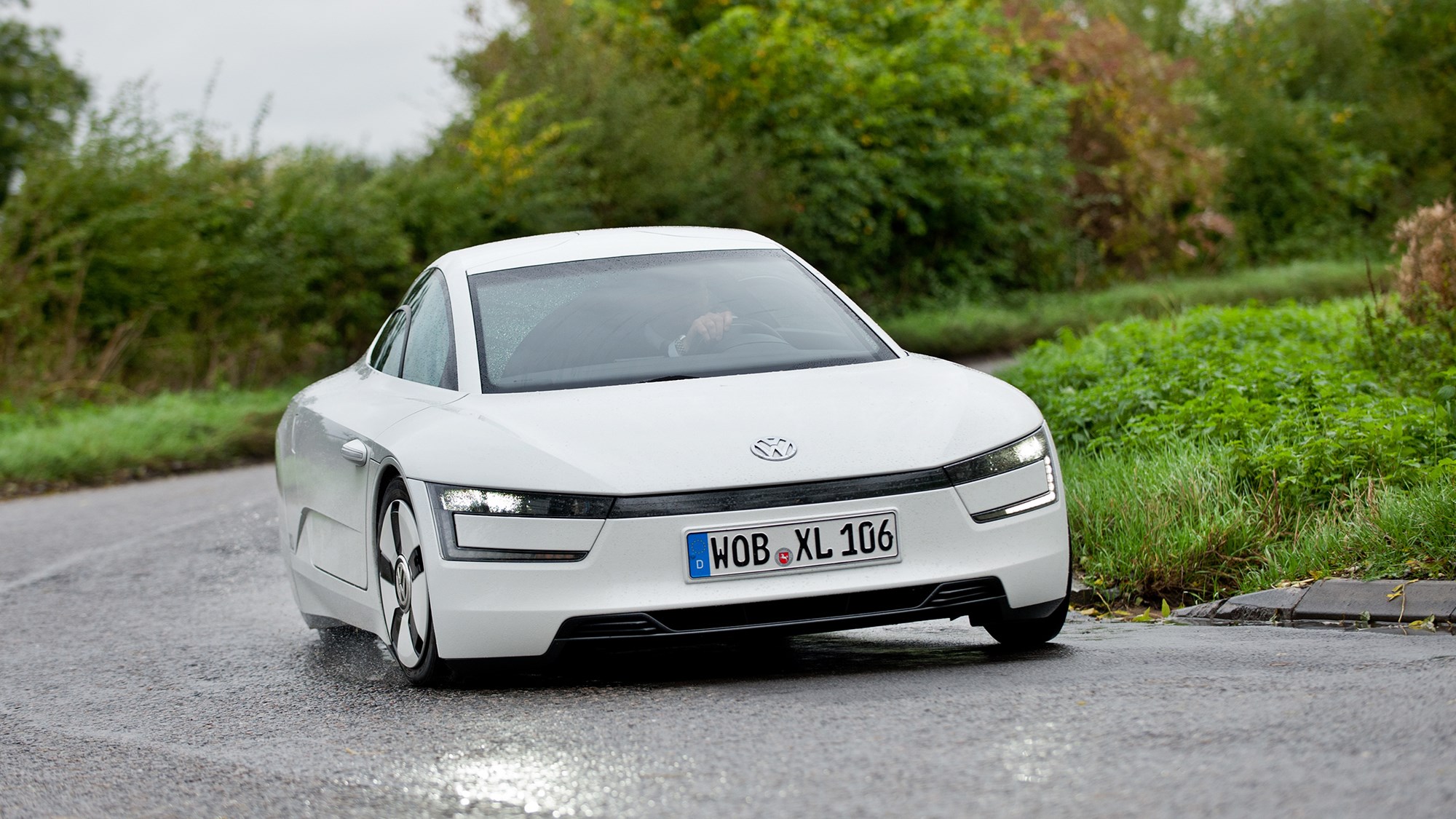
In town, the 795kg eye-catcher is a silent battery cruiser, unleashing 103lb ft of clean energy torque whenever you depress the accelerator – which one does with maximum restraint. After all, every overtaking manoeuvre is instantly reflected by the range indicator, the state of charge display and ultimately also by the fuel gauge. More than once, unassuming pedestrians stepped into our flight path because they simply did not hear the whispering ground-bound blimp approaching them from behind. Inside the beautifully finished cocoon-like cabin, however, the XL1 makes all sorts of strange and unusual noises.
The carbon-ceramic brake discs tend to rumble and chafe when not used hard (not an isolated incident; they still do today), the suspension responds to potholes with random thumps and plops, and under trailing throttle the transmission can sound like an ancient coffee grinder. We suspect much sound deadening was jettisoned in the name of dieting.
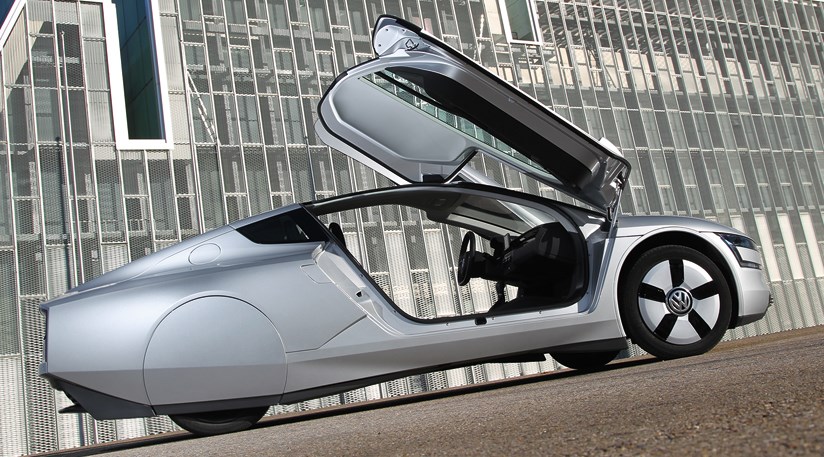
In theory, a full charge should make the 5.5kWh lithium ion energy cells take the car over a distance of 30 miles. In reality, however, it is almost impossible to maintain the steady pace required to reach this goal. That’s why it is advisable to switch to hybrid mode as soon as the speed quickens and whenever there are mountains to climb. The two-pot TDI cuts in and out with pursed clutch plates, but especially when still cold, its working noises sound – in contrast to EV silence – like an air hammer trespassing through a quiet zone. It’s loud and clattery.
Whenever the diesel is taking charge, the batteries can take some rest. While lifting off and coasting are the easiest tricks in the book, braking takes some getting used to because the transition from recuperation to deceleration is a little rough sometimes. After about one hour, you barely ever touch the brake pedal anymore: the XL1 is a clear case of fuel economy by foresight.
Although the consumption readout should be the pivotal gauge in a ‘one-litre’ (call it Target 282mpg) car, our eyes are instead glued to the state of charge indicator. In this difficult environment and in this kind of car, every climb is your worst enemy, every descent is your closest ally.
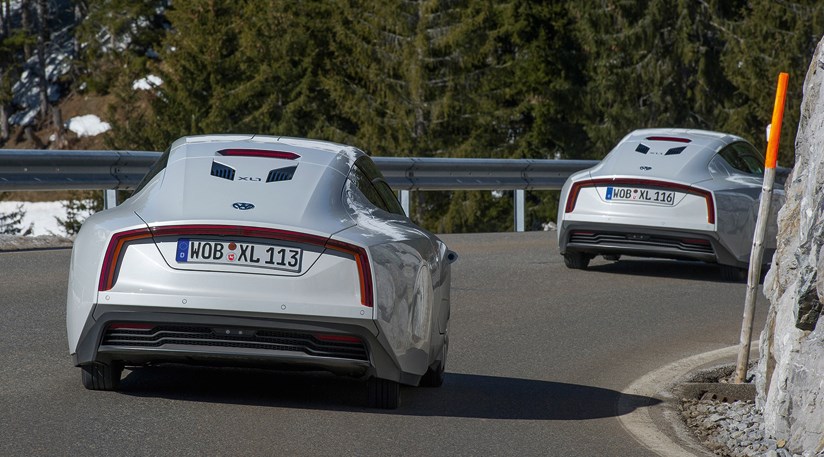
There is no doubt about it: this low and narrow aero wedge with the mean-looking LED headlights and the spaceship rear end is not only a great fuel miser but also an object lesson in vehicle dynamics. The unassisted steering is honest and keen, the mid-engined chassis is firm and stable, the brakes are prompt and well balanced, the skinny tyres (115/80 R15 up front, 145/55 R16 out back) have more grip than that small contact patch suggests, engine and motor are really something when they fuse power and torque.
The wheelbase is long enough for decent directional stability on fast straights and short enough for carving through hairpins and waltzing through esses. It would have been wonderful to keep up that brisk Tour de Suisse momentum, but the numbers on the in-dash monitor suggested otherwise: consumption 156mpg, state-of-charge 9.5%, EV mode currently not available. The guilty conscience sat heavy on my shoulders for the rest of the trip to Geneva. At the final destination, the XL1 first consoled itself at the pump and then at the wall charger.
What’s it like inside?
You enter the Volkswagen XL1 through elegantly engineered gullwing doors which are blown open by little integrated pyrotechnic devices should the poor thing ever come to rest on its roof after an accident. Getting in and out is remarkably easy, since the scissor doors lift a considerable part of the roof up with them, creating a large aperture.
One sits on lightweight Sparco buckets in a staggered position, the driver closer to the dashboard than the passenger, to avoid rubbing shoulders and to warrant an ultra-slim frontal area that almost matches a cabin scooter.
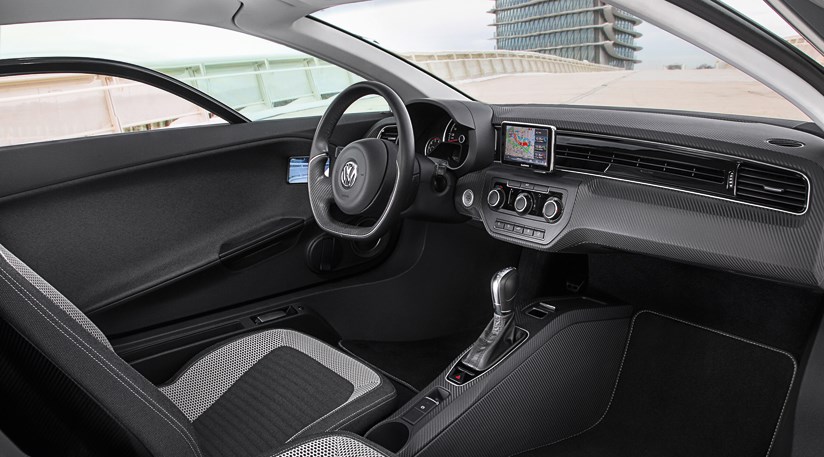
Instead of mirrors, monitors integrated in the door panels depict in full colour what is happening behind your backs. There is no rear window and hence no rear-view mirror. Just about the only low-tech item inside this space-age plug-in VW are the manual window winders, which fold out neatly from the door cards.
One of our overriding impressions is the sheer quality of the thing. Even in 2025, It’s hard to believe this was a low-volume special – the quality of fit and finish, the materials, the exquisite engineering throughout is quite something. Herr Piech, we salute you…
Before you buy
You’re probably thinking: is the VW XL1 really capable of those outlandish figures? Pleasingly, yes, is the quick answer. We have never achieved in excess of 300mpg, as claimed, but CAR has driven several examples at around 200 miles per gallon, as witnessed in our video above.
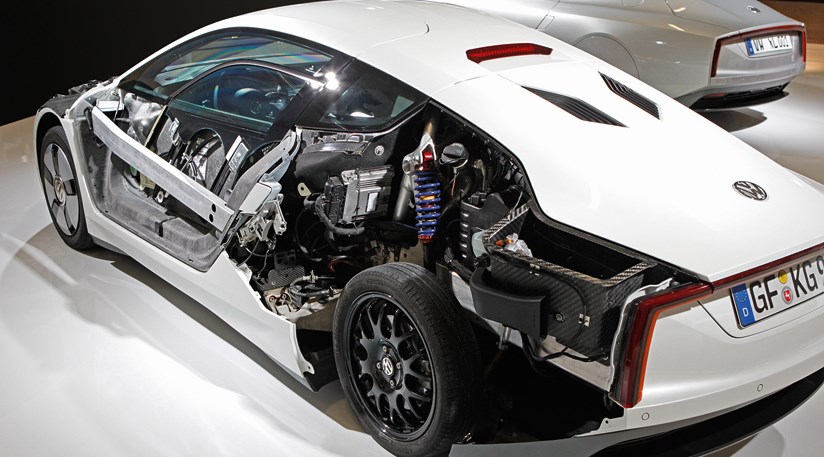
When the lithium ion battery has run out and the car reverts to a more regular diesel hybrid, economy plunges to double-digit miles per gallon. But even in the depths of a British winter, you’ll struggle to do worse than about 80mpg during mixed driving and more usually well in excess of 100mpg+. Frankly, the XL1’s efficiency is staggering – a lesson in what lightweighting and aerodynamics can do energy usage. We drove it for a week and used just half a tank of fuel: five litres!
If you fancy buying a Volkswagen XL1 today, you’ll have to look long and hard. Only 30 were brought to the UK priced at £98,515 apiece when new, and all were left-hand drive. According to licensing records, only 10 are still registered on the road today – and the prices haven’t dropped much since, with several selling for between £70k-100k in recent years.
Verdict
VW’s one-litre car shows what can be done when brainpower and money are no object. It’s a showcase of Wolfsburg’s engineering prowess and this car went on to influence nearly every VW product in the subsequent decade, introducing plug-in hybrid tech even if not its expensive construction methods.
To drive one today, a decade on, is a reminder of what Volkswagen can do when it put its mind to it. Would it happen today, in a post-Piech era? We fear not. It feels like a Concorde moment: we have regressed, submitted to to a legislation-enforced adoption of electric cars – flying in the face of engineering logic, as espoused by this cleverest of Volkswagens…
The Volkswagen XL1 has stood the test of time remarkably well. We were amazed by how fun it was to drive, by its immaculate quality throughout and – most of all – by its deeply impressive fuel economy. It is a remarkable achievement and a fully signed-up modern classic.